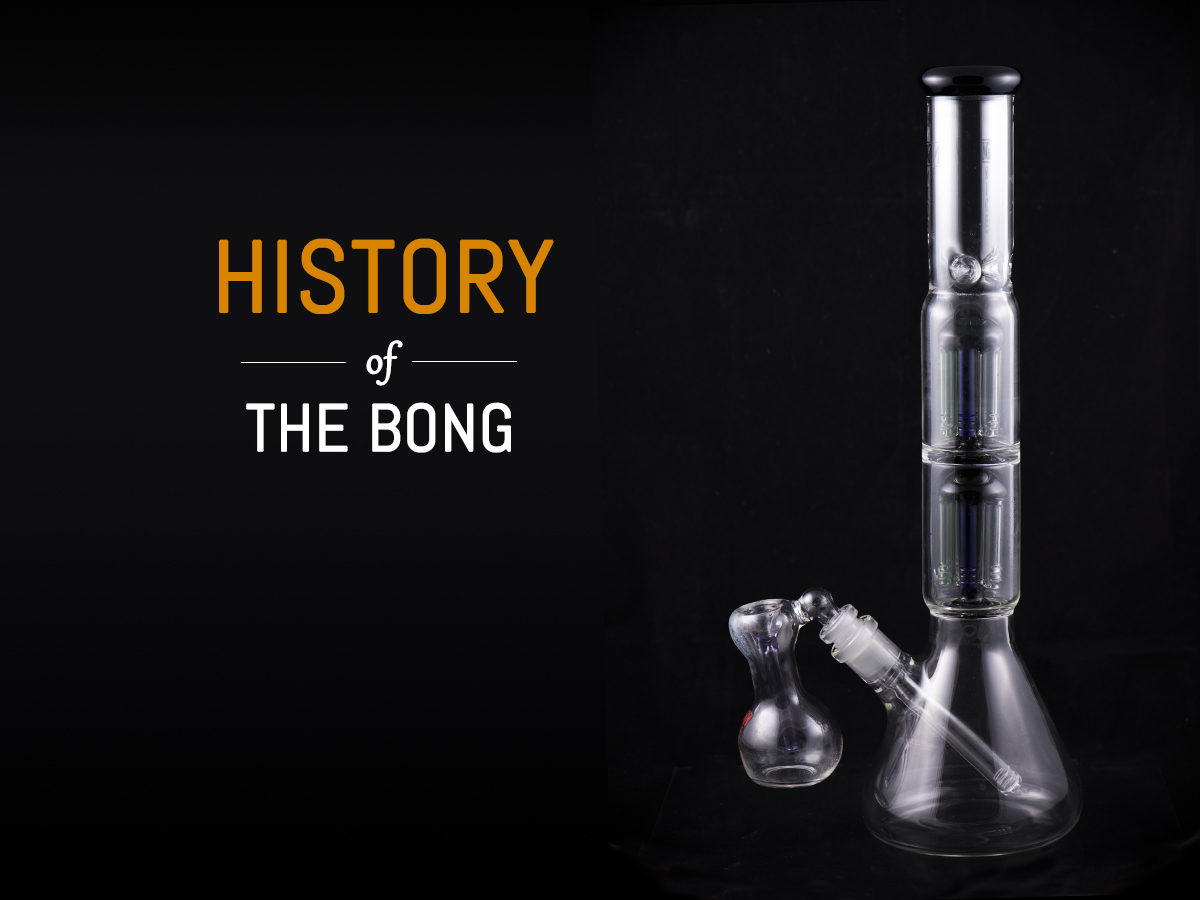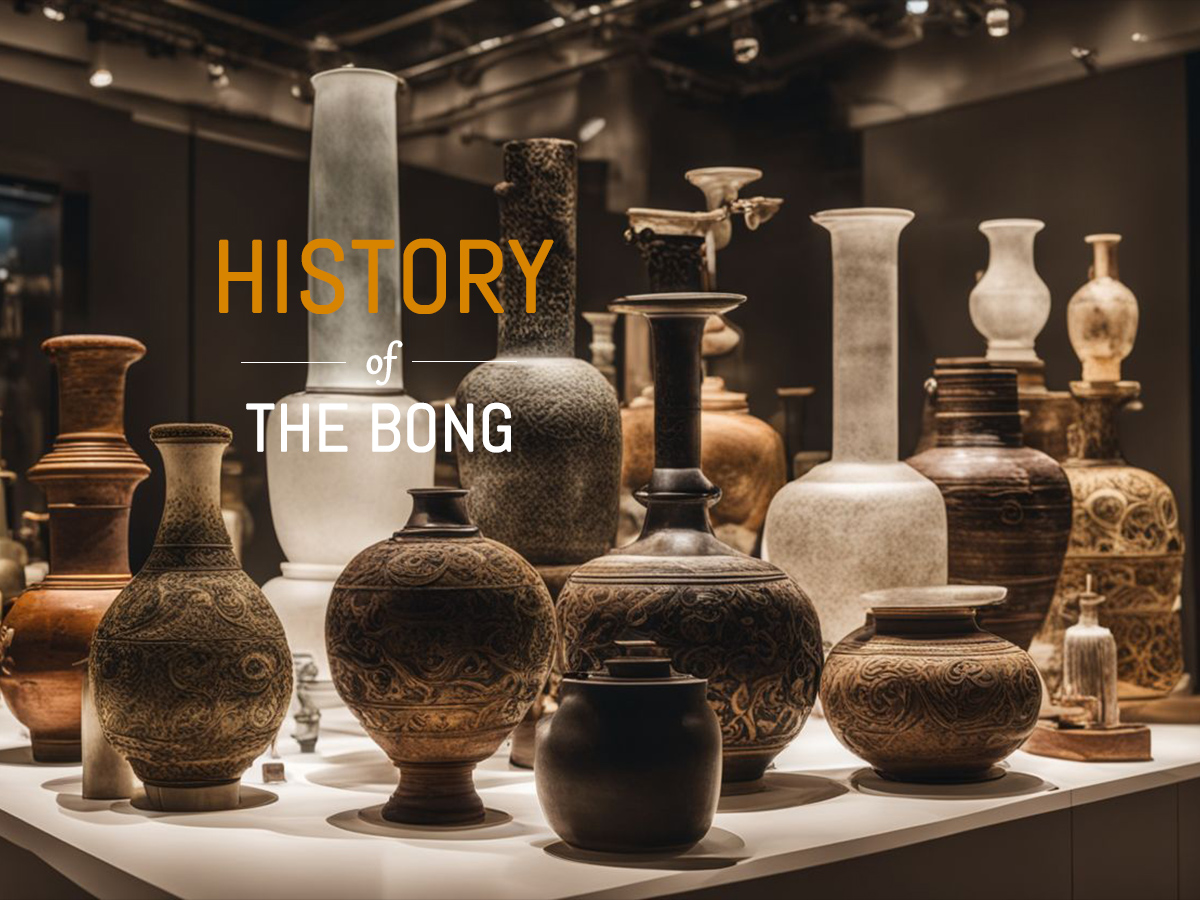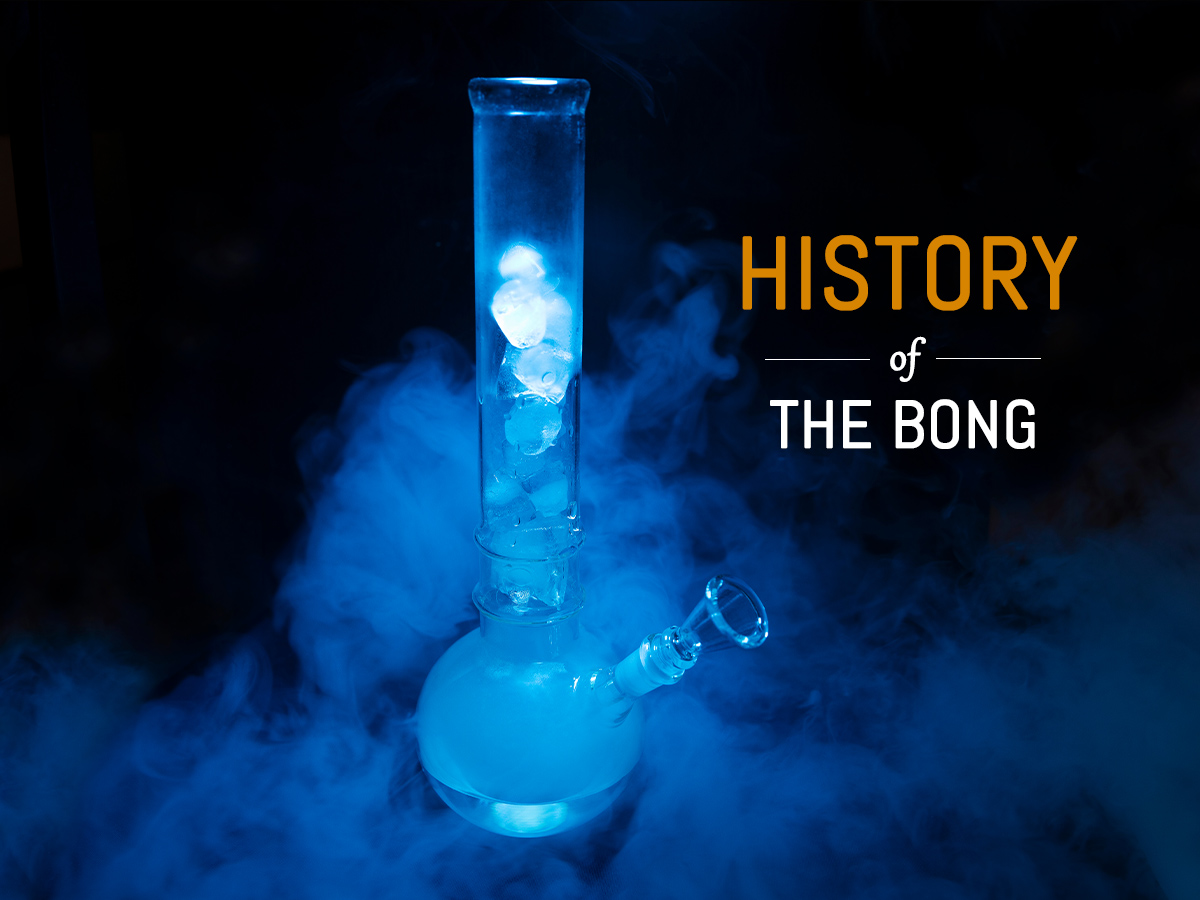Blog, News and Event
The history of bongs and dab rigs
Bongs and Dab rigs have a surprisingly long, rich, and complex history. In many ways, the history of the bong or dab rig go hand-in-hand with the history of marijuana consumption itself.
Based on reliable archaeological evidence in China, Southeast Asia, Persia, and Africa, the first bongs appeared approximately 2400 years ago. Are you surprised by this number? If you’re intrigued, let’s explore the detailed history of bongs and dab rigs with BONGSnPIPES in this article.
The history of bongs
1. Origin of the name – Bong

Etymologically speaking, the word “bong” has been linked to multiple linguistic cultures throughout Southeast Asia – regions in which the cannabis plant is indigenous and historically prominent. The modern term “bong” appears to be linked to the Thai word “baawng”, which describes a marijuana pipe or a hollow bamboo stalk, as well as the Hindi “bhāṅg” and the Sanskrit “bhaṅga”, both of which describe the cannabis plant.
Beyond the linguistic lineage of the word, there is a great deal of archaeological evidence demonstrating widespread use of bongs and bonglike pipes dating back hundreds and possibly thousands of years.
2. Archaeological evidence

Some of the oldest evidence for the use of bonglike pipes comes from the Caucasus Mountain region, which straddles the border of Europe and Asia. In 2013, archaeologists excavating a 2,400-year-old Scythian burial mound in the region discovered golden bowls caked in cannabis and opium residue. In June 2019, the journal Science Advances published a study by researchers who found evidence of cannabis use in a 2,500-year-old cemetery in the Pamir Mountains in western China.
While these bowls clearly show that humans were developing cannabis-smoking technologies as long as 2,400 years ago, it is unclear whether these were proper water pipes. For indisputable evidence of water pipes specifically, the research points to Africa.
According to history scholar John Edward Philips, Ph.D, the conventional assumption that bongs were invented somewhere in Asia is incorrect. In a 1983 study published in the The Journal of African History, Philips argues that:
By adding tube pipes to a water chamber, the San people of southern Africa found that they could cool the smoke from their pipes, and thus invented the peculiar “dagga [cannabis] pipe” of southern Africa.
He also claims that this invention occurred at some point prior to the late 1500s, before the introduction of tobacco into the continent.
That timeline matches other evidence for the use of water pipes. For example, researchers have discovered elaborate water pipes in Persia dating back to at least the early 1600s. Similarly, water pipes were introduced to China in the late 16th century, coming from Persia along the Silk Road trading route.
From their earliest uses, bongs have been closely linked to artistic expression and an exuberant celebration of cannabis consumption and culture. Even the 2,400-year-old Scythian pipes – possibly an ancient precursor to water pipes – were made out of gold and etched with ornate illustrations.
3. When were the modern bongs invented?

Since at least the mid-1900s, there has been a strong tradition among artists and glassblowers of creating artistic, complex, custom pieces. The art book “This is a Pipe: The Evolution of the Glass Pipe and Its Artists”, co-authored by Nicholas Fahey and Brad Melshenker, offers perhaps the best example of this tradition. The book highlights some of the world’s leading glass pipe makers, and shows incredibly complex, multi-chambered, specialty bongs that perfectly blend the functionality of a water pipe with the creativity of high art.
Modern bongs have been around since the mid-20th century. The exact origins are somewhat debated, but they became popular in the United States during the 1960s and 1970s as part of the counterculture movement. These bongs were typically made from glass or acrylic and featured more elaborate designs compared to earlier versions. Since then, the design and technology behind modern bongs have continued to evolve, with a focus on improving functionality, aesthetics, and user experience.
Putting it all together, it seems likely that while humans have smoked cannabis out of rudimentary pipes for thousands of years, the specific idea of using a water pipe probably showed up sometime in the early 1500s in Africa. The technology appears to have spread to Persia, and from there, to other parts of Asia. Either way, bongs have become a mainstay of cannabis culture, as people around the world have consistently used them to smoke cannabis. Today, it remains one of the core methods for consuming marijuana.
The history of dab rigs
The history of dab rigs combines the long tradition of smoking out of bongs with the more recent emergence of highly potent cannabis concentrates.
From roughly the 1960s to the 1990s, people typically relied on so-called “knife hits” to smoke concentrates. After heating knives on a stovetop until they were glowing red, consumers would drop a small chunk of hash onto the knives and then inhale the vapors using a tube or soda bottle.

The brother-and-sister glassblowing duo Hashmasta Kut and Lucy Carson created the first iteration of the modern dab rig around 2006. Their piece used a titanium skillet and a glass arm, allowing consumers to heat the skillet, drop a hunk of concentrate onto it, and then inhale the vapor through the glass arm.
This invention paved the way for the glass dome and nail, which hit the scene a short time later. These innovations made it possible to vaporize concentrates more efficiently, and then to pull the vapor through a water pipe for a one-of-a-kind cannabis smoking experience, which quickly became known as dabbing.
From there, dabbing and the dab rig took off within the cannabis scene. “This is a Pipe” co-author Melshenker wrote: “flower pipes switched over to oil rigs in 2009-2010, and artists really stopped making flower pipes.”
Given its more recent history, and especially its explosion onto the cannabis scene within the past 10 years or so, dab rigs are much more embedded in mainstream contemporary culture, including music, visual art, the Internet, and electrical and digital technology.
In pop culture, the presence of dabbing, and by extension dab rigs, includes the “dab” dance move, the origins of which are highly disputed but which propelled the term “dab” into the mainstream lexicon; and YouTube and social media, where cannabis personalities such as CustomGrow420 and others regularly show themselves dabbing.
In the age of expanding legalization, concentrates have surged in popularity to become the number two most purchased type of cannabis product behind flower. That surge has also carried dab rigs – the traditional means of consuming concentrates – into mainstream cannabis culture.
